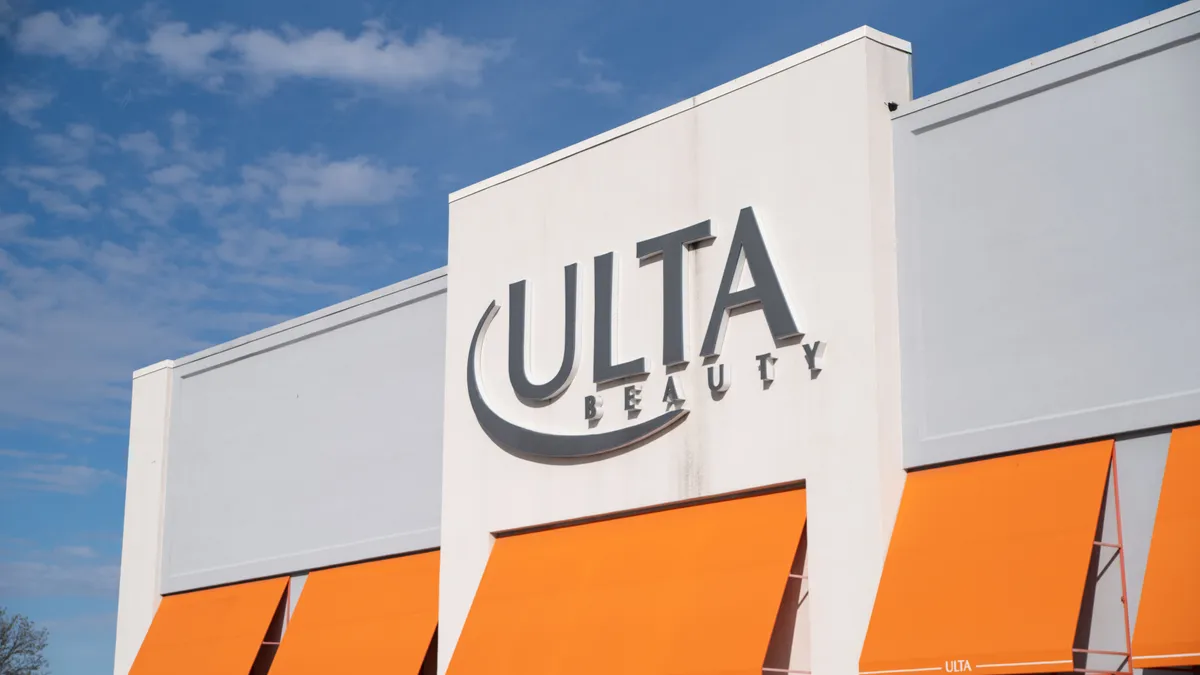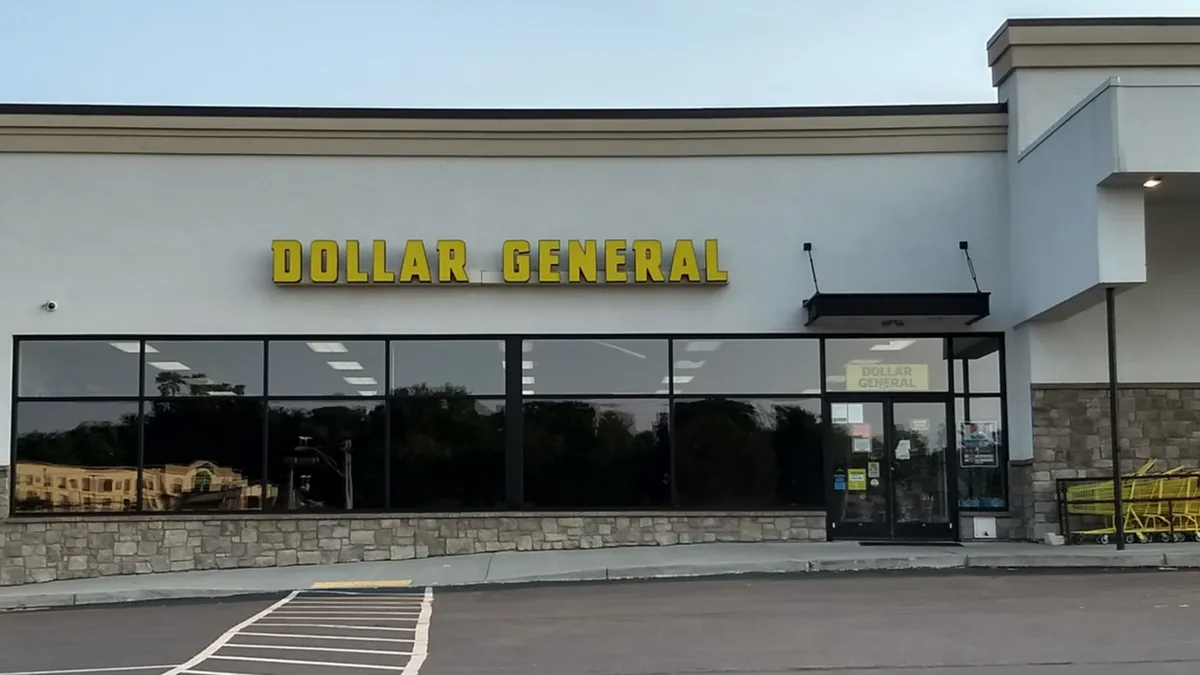Sears Holdings Chairman Eddie Lampert has bought yet more time to revise his $4.4 billion bid to keep the 126-year-old retailer running.
During a bankruptcy hearing on Tuesday, members of Sears Holdings' special committee on the issue said that after several days of "round-the-clock negotiations" they will allow Lampert's hedge fund, ESL Investments, to revise its bid ahead of the Jan. 14 bankruptcy auction. Another court hearing to confirm the results of that auction is scheduled for Jan. 31.
ESL is expected to formally submit that bid, along with a $120 million deposit, by 4 p.m. Wednesday. That money, of which $17.9 million is non-refundable, is the cash burn the company expects to lose ahead of the auction.
An ESL spokesperson told Retail Dive in a statement that the firm is encouraged by the fact that the debtors are working with the company to formalize its going concern proposal. "As we have said before, our proposal provides substantially more value to stakeholders than would be the case in liquidation and is the only option to save an iconic American retailer and up to 50,000 jobs. We believe in Sears and will continue to do everything we can to ensure that it has a profitable future."
Sears did not respond to Retail Dive's request for comment.
"It's good news for Mr. Lampert, it's good news for Sears, it's good news for the bankruptcy estate."

David Wander
Bankruptcy partner, Davidoff Hutcher & Citron
"It's kicking the can down the road in a good sense, because we'll at least have an auction sale instead of going right to a [going out of business] liquidation," David Wander, a bankruptcy partner at Davidoff Hutcher & Citron, told Retail Dive in an interview Tuesday. He represents two unsecured Sears creditors.
"It's good news for Mr. Lampert, it's good news for Sears, it's good news for the bankruptcy estate," he said.
Next week, Sears will consider the ESL bid along with several other options to liquidate the business. Negotiations are expected to evolve from there, and could potentially go back and forth up until the next court date at the end of the month.
The announcement to consider Lampert's last-minute changes came as a surprise for some, considering anonymous sources told several media outlets ahead of the court hearing that Sears intended to tell the bankruptcy court it had rejected ESL's bid and planned to urge a liquidation. A person familiar with that situation told CNBC Tuesday afternoon that Lampert protested a rejection and noted that Sears' bankruptcy advisors have racked up millions in fees.
Lampert's bid on the business, which was initially filed in December, garnered early criticism from some creditors, and even as ESL sweetens the pot, there are still many lingering questions regarding what creditors will end up with in the case of liquidation or with ESL's bid intact.
"My client, who say for example is an apparel vendor, their concern is: are they going to get paid if they ship post-petition?" he said. "And it's unclear to what extent the ESL bid would filter down to a distribution to unsecured creditors or even administrative creditors ... the ones who deliver goods within 20 days of a bankruptcy."
Creditors, Wander said, care about two things: How much money will be paid on a claim and if there's someone to continue doing business with. One hesitation regarding Lampert's latest bid is that his credit bid doesn't provide any cash.
"[A]nything that was valuable they got rid of. So, it's really hard to see a scenario that makes sense in the future given what's happened in the past and the immediate past."

Barbara Kahn
Professor at the Wharton School of Business
Another, for some, comes down to reputation, Barbara Kahn, a professor at Wharton's school of business, told Retail Dive in an interview on Tuesday. "People just don't trust his motives," she said, alluding to Lampert's role as Sears' CEO for part of the decade in which the retailer's stores deteriorated.
"They had so much stuff, and they just sold it off — anything that was valuable they got rid of," she said. "So it's really hard to see a scenario that makes sense in the future given what's happened in the past and the immediate past."
For creditors, that may not matter. "My client does business with the buyers at Sears," Wander said. "What [Lampert] does at a macro level isn't going to affect them."
The decline of Sears did not come swiftly, nor was it a surprise. Sears store sales have fallen from more than $30 billion in 2013 to under $11 billion in 2018, according to data from eMarketer emailed to Retail Dive last year. Even e-commerce sales, which have soared at big-box retailers like Target and Walmart, have plummeted at Sears. Digital sales dropped from $3.3 billion in 2013 to just under $2 billion last year. The all-important holiday season doesn't seem to have spurred business either, despite deep discounting.
"Our data from the holiday period show that overall customer usage of both Sears and Kmart has fallen, and perceptions of both brands are sharply down on last year's low scores, In essence, there is simply very little equity left in the brand," Neil Saunders, managing director of GlobalData Retail, said in comments emailed to Retail Dive.
A steady decline of the business over the last few weeks may also be hurting the value of inventory, which is a source of collateral value that multiple creditors are likely watching, Philip Emma, an analyst at Debtwire, told Retail Dive in an interview Monday.
"The reality is the business, from the numbers they presented in their revised forecast, they weren't hitting the numbers in December that they had in their original budget," he said. "Not only does that create the topline problem but the more immediate problem where you've got less inventory than anticipated and that inventory likely has less value than may have been anticipated."
Sears is falling into the same situation as Toys R Us, he added. "There wasn't enough performance to merit continuing down the going concern path," he said.
The final chapter in the saga of Sears has yet to be written and just what will come of its assets, what vendors and creditors will end up with and whether employees will keep their jobs or receive severance pay are all questions that remain to be answered. What is clear to Saunders, though, is that the rise and fall of Sears represents a cautionary tale to modern retailers.
"It also serves as an example that even the once most powerful and cutting edge of brands can easily fail in a retail environment where change and evolution are the order of the day," he said.





















